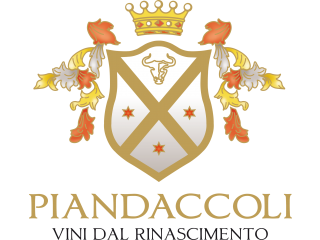

| Sangiovese |

Floral nose with cherry and strawberries, enriched with a sprinkle of laurel and saffron. On the palate it melts in a soft embrace of fruit and velvet, well balanced and elegant.
Appellation |
Chianti DOCG |
|---|---|
Pairing |
Pair with red and white meats, roasts, medium and long-matured cheeses, hearty soups and Florentine steak. |
Vineyard |
The vineyards lie close to deep and fresh ravines which are the result of extraordinary geological formations called Piandaccoli, which have the outstanding advantage of bringing a variable to the microclimate in the area, triggering ascending currents which mitigate high temperatures in summer. Soil management aims to provide defense against erosion, aiding conservation and the creation of a physiological balance and the regulation of the vegetative-productive activity of the vineyard, with direct and indirect effects on physiopathologies. Soils consist of clay and river stones, and the vineyards are under organic conversion and utilize biodynamic methods. |
Vinification |
The hand-harvested clusters are de-stemmed using a vertical vibrating system, which leaves behind dry and underripe grapes. Gentle pumping over occurs in steel tanks and a Bucher press compresses the marc while preventing the crushing of the grapes to minimize the releasing of tannins. After 15 months in steel tanks, the wine is further aged in barrels for 6 months. |

The estate began with the cultivation of vineyards by monks in 1100, before the phylloxera epidemic that hit Europe in the mid-nineteenth century wiped out the indigenous varietals present in Tuscany. Piandaccoli emerges in 1950 with the production of Chianti, but it was the vision of Dr. Giampaolo Bruni that set the stage for this incredible winery's future. He collaborated with the University of Florence, using DNA testing on grapes found in the Medici tombs, to reintroduce autochthonous varietals prevalent during the Italian Renaissance.